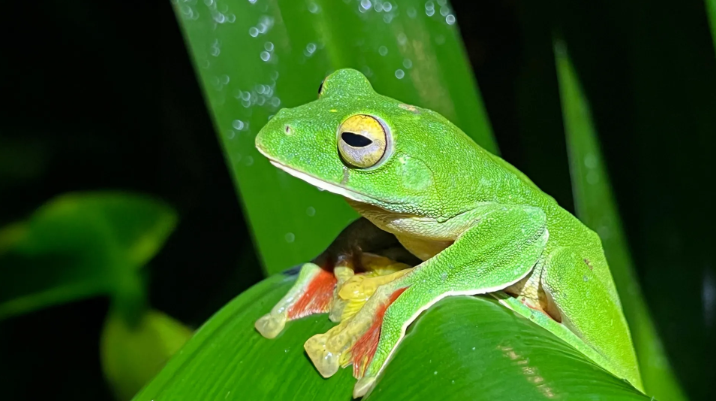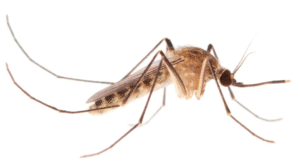Scientists Uncover a Surprising Twist in Earth’s Extinction Story

A groundbreaking University of Arizona study reveals that extinction rates peaked a century ago and have been declining since — reshaping what we know about biodiversity loss and the future of life on Earth.
A Stunning Discovery: Extinction Is Slowing Down
For decades, scientists and environmentalists have warned that humanity is driving the planet toward a sixth mass extinction — a crisis where species vanish faster than they can evolve. Yet new research from the University of Arizona challenges that grim narrative, revealing a surprising truth: extinction rates have actually been declining for more than a century.
According to a sweeping study spanning 500 years of data, the pace of species loss reached its highest point around the early 1900s and has since slowed. The results defy the common assumption that extinctions are accelerating in modern times — and suggest that humanity may have more power to reverse biodiversity loss than previously believed.
A Century of Change in Earth’s Biodiversity
The study, published in the Proceedings of the Royal Society of London, analyzed data from nearly two million species — including plants, arthropods, mollusks, and land vertebrates — to understand long-term patterns in extinction. Researchers Kristen Saban and John Wiens, both from the University of Arizona’s Department of Ecology and Evolutionary Biology, examined the documented losses of 912 species since the 1500s.
Their findings reveal that extinction rates were highest during the late 19th and early 20th centuries — a time when global trade, colonization, and invasive species wreaked havoc on ecosystems, particularly on islands. But after that peak, rates began to fall.
“We discovered that the causes of those recent extinctions were very different from the threats species are currently facing,” said Wiens. “This makes it problematic to extrapolate these past extinction patterns into the future.”
Rethinking the “Mass Extinction” Narrative
For years, researchers have sounded alarms that we’re in the midst of a new mass extinction event — comparable to the catastrophic asteroid strike that wiped out the dinosaurs 66 million years ago. However, Saban and Wiens argue that these predictions rely on oversimplified models.
Most extinction forecasts, they explain, project past trends into the future as if the same forces continue unchanged. But history shows that extinction drivers have evolved dramatically.
Centuries ago, the main culprits were invasive species brought by human expansion — rats, goats, pigs, and pathogens that devastated isolated island ecosystems. Today, the gravest threats are habitat destruction, deforestation, and urban sprawl on continental landmasses.
“Past extinctions are weak and unreliable predictors of current risk,” said lead author Saban, now a doctoral student at Harvard University. “What we’re seeing today reflects entirely different pressures on life.”
Islands Lost, Continents at Risk
The researchers found sharp contrasts between island and mainland extinction patterns.
- On islands, invasive species were once the biggest killers. Hawaii, for example, lost scores of unique birds, snails, and plants after Europeans introduced predators and livestock.
- On continents, however, the story is different. Freshwater ecosystems — rivers, lakes, and wetlands — have suffered the most, largely due to pollution, dams, and land conversion.
Even more surprisingly, the study found no evidence that climate change has yet driven significant extinctions.
“That doesn’t mean climate change isn’t a threat,” Wiens clarified. “It simply means that the extinctions we’ve already documented were caused by other factors.”
What’s Driving Extinctions Now?
Using data from the International Union for Conservation of Nature (IUCN), the researchers analyzed threat levels for over 163,000 species. The findings paint a complex picture:
- Most extinct species were mollusks and vertebrates on islands, lost mainly to invasive species.
- Most threatened species today are found on continents, facing destruction of their natural habitats.
This shift underscores how the dynamics of extinction have evolved over time. Invasive predators once dominated the story; now bulldozers, chainsaws, and climate pressures define the threat.
Signs of Hope: Extinction Rates Are Falling
Contrary to the apocalyptic tone often heard in environmental discourse, the data shows a decline in extinction rates for many groups — including plants, arthropods, and land vertebrates — since the early 20th century.
One key reason: conservation works.
“We have evidence that investing money in conservation actually works,” Wiens said. Laws protecting endangered species, the establishment of wildlife reserves, and global biodiversity agreements have helped stem the tide of loss.
From saving the bald eagle in the United States to restoring tiger populations in Asia, these efforts prove that targeted human action can change the trajectory of species survival.
Why the Past Can’t Predict the Future
Saban emphasized that the research doesn’t downplay the seriousness of biodiversity loss — rather, it calls for accuracy and perspective.
“If we say what’s happening now is like an asteroid hitting Earth, it feels impossible to solve,” she said. “But the data show a more nuanced story — one where action makes a difference.”
The study’s authors caution against using fear-driven narratives. While urgency is vital, exaggeration can lead to public fatigue and hopelessness. By grounding conservation science in data, researchers hope to inspire practical, sustained solutions rather than despair.
The Shifting Causes of Extinction
1. The Age of Exploration (1500–1800)
This period saw massive biodiversity loss as European colonization introduced invasive species worldwide. Rats, pigs, cats, and diseases decimated isolated island fauna that had never evolved defenses.
2. The Industrial Boom (1800–1900)
Rapid industrialization, deforestation, and hunting for trade caused extinction spikes. Iconic examples include the great auk and the Caribbean monk seal.
3. The Modern Era (1900–Present)
While industrial pressures remain, new conservation laws and environmental awareness have helped stabilize many populations. However, habitat destruction and pollution now pose the largest ongoing risks.
Why Climate Change Isn’t Yet the Top Cause — But Soon Might Be
One of the study’s most debated findings is that climate change has not yet caused a major wave of extinctions.
Scientists believe this is because many species can temporarily adapt, migrate, or survive in microclimates. But as global warming accelerates, this buffer is shrinking.
“Climate change’s full impact may simply not have arrived yet,” Wiens noted. “We’re in the early stages of a much larger shift.”
That means the coming decades could test whether humanity’s conservation efforts can outpace the growing pressures of a warming planet.
Lessons for the Future
1. Invest in Habitat Protection
Preserving natural habitats is now the single most effective way to prevent extinctions. Protecting rainforests, coral reefs, and wetlands safeguards thousands of interconnected species.
2. Strengthen Global Collaboration
The decline in extinction rates shows what’s possible when countries cooperate — through treaties like the Convention on Biological Diversity and funding from initiatives such as the Global Environment Facility.
3. Use Better Data, Not Fear
The study advocates for data-driven conservation messaging. Understanding the true scope of biodiversity loss allows for smarter policy decisions and public engagement without resorting to exaggerated catastrophe narratives.
From Despair to Determination
For Wiens and Saban, the ultimate goal of their research is not to minimize the crisis — but to inspire realistic optimism.
“Many people are working incredibly hard to prevent extinctions,” Wiens said. “This study shows their efforts are making a difference.”
Indeed, many once-doomed species are rebounding thanks to global conservation efforts — from the California condor to the giant panda. While challenges remain immense, these victories demonstrate that the planet’s story is not one of inevitable decline.
A Wake-Up Call for Better Science
The authors stress that biodiversity loss remains an urgent issue — but science must evolve beyond outdated models. Rather than extrapolating from centuries-old data, modern researchers must account for today’s complex, shifting ecological dynamics.
“Biodiversity loss is still one of the defining challenges of our time,” Saban said. “But to solve it, we need to understand it accurately — and that starts with the data.”
The Bigger Picture: Humanity’s Role in the Planet’s Recovery
The study’s message isn’t one of complacency, but empowerment. It suggests that extinction isn’t an unstoppable force — it’s a human-driven process that humans can also reverse.
From reforestation projects in the Amazon to marine protected areas in the Pacific, the data suggests that global action can make a measurable difference.
As Wiens put it: “The story of life on Earth isn’t just about loss — it’s about resilience.”
Conclusion: A More Nuanced Story of Survival
While headlines often warn that humanity is pushing Earth toward disaster, the truth is more complex. Yes, biodiversity remains under immense pressure. But species losses have slowed, conservation works, and the future is still unwritten.
The University of Arizona study reminds us that hope and data are not opposites — they are allies. Understanding the true patterns of extinction helps humanity chart a better path forward, one where saving species is not just a dream, but an achievable goal.
As Saban concluded, “By looking at the data with honesty and perspective, we can replace despair with determination — and write a different ending for life on this planet.”
Internal Linking Suggestions:
- Link “mass extinction” to a Climate & Environment category.
- Link “habitat destruction” to Wildlife Conservation articles.
- Link “biodiversity loss” to Sustainability or Ecology sections.
- Link “University of Arizona study” to your Science Research section.






